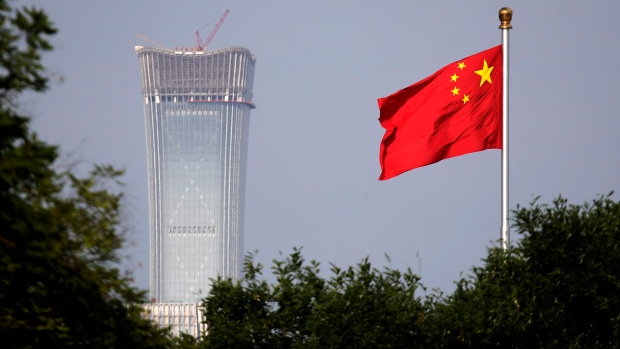Jan 20, 2019
China’s economy slows to weakest pace since 2009 amid trade war
Bloomberg News

China isn’t set to come to the rescue of a weakening world economy even amid signs policy makers are successfully cushioning some of its slowdown.
A wave of data released on Monday showed December gauges of consumption and factory output in the world’s second-largest economy accelerated and investment held up even as expansion in the fourth quarter dipped to 6.4 per cent, the softest since 2009.
The upshot of all the numbers is that while a slump may for now be avoided, the government’s preference for drip-feed stimulus means a rebound in growth is also unlikely too. That risks disappointing the investors and business leaders descending on Davos for the World Economic Forum’s annual meeting and who are already concerned by trade wars, the U.S. government shutdown and Brexit.
“If China continues with its measured and piecemeal approach to stimulus, global growth will continue to lose momentum,” said Katrina Ell, an economist with Moody’s Analytics in Sydney. “The big unknown is how far China will go. Beijing’s preference has been to avoid repeating previous massive stimulus support, but they may be forced into more aggressive action if momentum continues to wane.”
China’s economy, which contributes about a third of global growth, is on a long-term slowing trajectory as it shifts from the investment-led model of the past while carrying a heavy debt load. The government’s response with targeted stimulus measures is also being tested by the standoff with U.S. President Donald Trump over trade at a time when the global expansion is already looking shakier.
Capital Economics estimates slower China expansion will shave about 0.2 percentage point off global growth this year, compared to 2018, while Citigroup Inc. warned in a Jan. 14 note that the China slowdown may “blow the global economy off course.”
The data contributed to a continued rally in Asian stocks, with shares in Tokyo, Hong Kong and Sydney climbing.
For the full year, the economy expanded 6.6 per cent, the slowest pace since 1990 and in line with estimates. Although it has moderated significantly from the years of double-digit growth, China is still one of the fastest growing large economies and its larger size now means it remains the world’s growth engine.
A breakdown of the latest data indicate modest signs that government stimulus may be working, albeit slowly. Investment in infrastructure continued its pickup from a nadir reached in September. Industrial output data signal stronger activity in construction, with glass and cement output both accelerating.
The retail sales breakdown also went some way to counter fears of a slump in consumer confidence, showing that the decline in auto sales far outpaces any weakening in other items. Sales of household electronics, furniture, clothing and food all accelerated.
What Our Economists Say...
“While the data appear to tell a "glass half full, half empty" story, market sentiment might be helped by the improvement in the indicators’ second derivatives -- in other words, the slower pace of deterioration -- and expectations of more policy support.”-- Chang Shu and David Qu, Bloomberg EconomicsFor the full note click hereA Bloomberg gauge that estimates monthly GDP rose to 6.6 percent in December from 6.35 percent a month earlier.
Targeted Support
So far, the government and central bank have tried to stimulate the economy without resorting to a massive credit flood and infrastructure binge like in 2009. The People’s Bank of China has been quietly guiding interbank borrowing costs down without actually cutting official interest rates, and the fiscal authorities have pressed on with tax cuts and expedited government bond sales, among other policies.
With President Xi Jinping’s top economic aide Liu He heading to the U.S. this month, the challenging economic background adds pressure to reach a deal on trade. According to people close to the discussions, the two sides have so far made little progress ending what the U.S. has dubbed as decades of state-coordinated Chinese theft of American intellectual property.
Due to the massive size of its market, China’s slowdown is also bringing pain to companies and industries worldwide, including automakers such as Volkswagen AG and Toyota Motor Corp.
Meantime, a downturn in iPhone sales in China has hurt Apple Inc.’s share price this month and raised question marks over whether the consumer can keep cushioning the economy’s re-balancing. A plunge in South Korean exports in early January to China added to concerns.
If the slowdown deepens, authorities may resort to more aggressive easing such as relaxing property purchasing curbs in the biggest cities, economists have speculated. Following the data, analysts were split over how much confidence the most recent numbers inspire, though most agreed the government will react if the data worsens.
“There will be more stimulus, more monetary easing, more infrastructure investment, which will support the jobs in the manufacturing sector even if the business activities are low,” said Iris Pang, an analyst at ING Bank in Hong Kong.